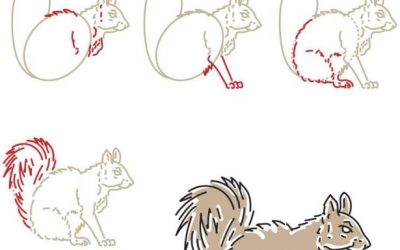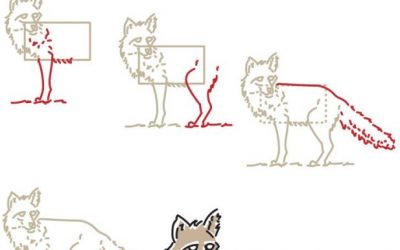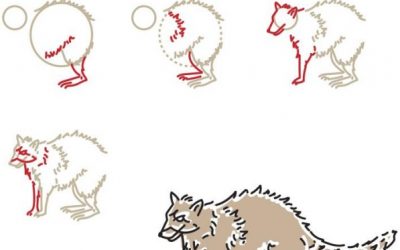
MATERIALS
• Canvas 900 x 600mm
• Bristle brushes flat 34″, flat 14
• Sable brushes 5/0, 0, 1,2, 4, 6
• Taklon detailer 5/0
• Sable liners 20, 5/0
• Art Spectrum Odourless Solvent
• Genesis Air-dried clear gloss varnish
• Genesis heat-set artist oil paints – Titanium White, Phthalo Blue, Cobalt Blue, Payne’s Grey, Flesh, Raw Umber, Raw Sienna, Yellow Ochre, Burnt Sienna
STEP ONE
This painting is quite simple in concept and composition. However, consequently there is nowhere to hide! Simplicity can often add impact.
I had good reference photos of pelicans serenely floating along a river near Noosa, with lovely reflections in the afternoon light. The first step in this painting was to decide on the composition and positioning of the pelicans within the canvas, considering the reflections as part of the positive/negative shapes to balance. This involved combining several reference photos.
Using Genesis heat-set paints, I blocked out the full background with blue-grey base colour. I roughly painted in the birds to judge whether I was happy with the balance and position.

STEP TWO
I placed the pelican on the left further back into the water and made him a little smaller to show distance. I wanted to fill in most of the water and its soft blended lines first, deciding to work on the pelicans later. The spaces between the ripples are closer together the further in the distance they are. The water has softer paler tones at the back, with more definition and darker tones at the front.

STEP THREE
Once I had added more definition to the lines in the water, softly blending different tones of blues, I started to block in the light and dark parts of the main pelican. Notice the reference photo of pelicans attached to the easel which I used for accuracy of anatomy and direction and shape of feathers.
During the painting of a piece, I usually spend a lot of time with the canvas upside down or even sideways, odd as that may seem to those who haven’t tried it. It really helps me to approach the painting and its details objectively … to stand back and look impartially at the shape and shading on which I’m working.

STEP FOUR
The other two pelicans were blocked in with Payne’s Grey, white, blue mauves for shadows and flesh colour for beaks. At this stage, colour is placed to show basic tone, a little like a map of where to go next.
There is a common analogy that you begin a painting as though using a broom and finish as though using a needle! I seem to follow that tendency – wild and rough to start, to which I must admit I’m naturally inclined, and then as I’m aiming for detail and realism, slowly layer upon layer refining until figuratively ‘painting with a needle’.

STEP FIVE
Reflections are placed below the pelicans following the staggered ripples. Again, at this stage, just basic block tones are used.

STEP SIX
Using a limited colour palette for the reflections and shadows on the pelicans to unify the painting, I predominantly used Payne’s Grey, Raw Sienna, Raw Umber, White, Cobalt and Phthalo blues with touches of Yellow Ochre and Burnt Sienna.
I made the reflections of the larger pelican more defined and with stronger tones than the others.

FINAL STEP
Now for the painting with a ‘needle’! At this final stage of the painting, a great deal of time was devoted to the fine details of the birds to give them a look of depth and realism. I really enjoy seeing blocks of shapes and colour transformed into lifelike features that have some sense of depth. I added definition and texture to the individual feathers, remembering to follow the natural direction of a pelican’s feathers. This is when good reference photos are essential.


ARTIST’S HINTS AND TIPS
• A daylight bulb is great for making sure that colours are trueto-life, and it provides a strong, clear light. I like working with two lights coming from different directions, helping avoid the shadows made by hand and brush.
• I often carry a camera with an extra telephoto lens with me not just for dedicated photo shoots, but for those everyday moments. You never know when you may stumble across that beautiful lighting or interesting reflection. Inspiration can come from unexpected sources.
• Once you think you’ve finished your painting spend some time just looking at it – walk past it, stand back, without brush in hand. Live with it for a time. This may give you an opportunity to see it more objectively and dispassionately and improve any little things that you may not have noticed while you were in the painting process.





